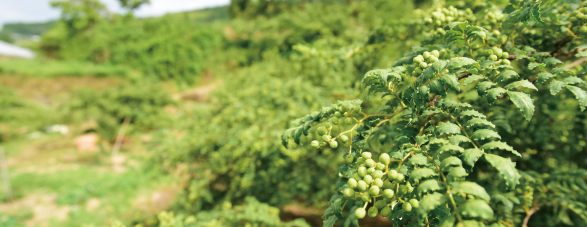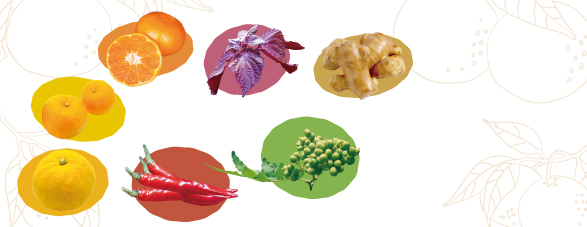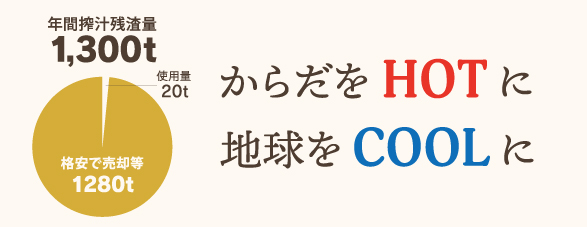(English) Mikan-Nanami

Mikan nanami is a product that allows you to enjoy 7 types of Japanese spice ingredients that are delicious and rich. It's based on ITO-NOEN's Wakayama-produced mandarine orange powder"Chinpi(dryed peel)", it is a unique blend of yuzu, Jabara Chinpi ,Red chili pepper, and ginger also produced in Wakayama. (Citrus and Japanese pepper make up over 70% of the total!)
It is characterized by a unique taste with exquisite citrus flavor, spiciness, and sharpness. It can be used for a wide range of dishes such as 鍋(japanese hotpot), noodles, soups, and yakitori.
-
You can enjoy good enough flavor of "Sansho 山椒" made in Aridagawa region in Wakayama.
In fact, Wakayama Pref, is the most popular place of "山椒 Sansho", far ahead of the second place. 60% of "山椒 sansho" is produced in Wakayama Prefecture. Among them, the Shimizu area of Aridagawa-machi, which is about 30 minutes one way from Arita City, where ITO-NOEN is located, is famous for the 「grape sansho」 that grows like bunch of grapes. It is characterized by its spicy and edgy spiciness.
ITO-NOEN's "Mikan-nanami" uses more than 10% of this "grape sansho" powder, which plays a major role in the high aroma of "Mikan-Nanami". Thanks to this "Sansho", we were able to create a delicious and differentiated product while using local products. -
All ingredients are domestically produced.
which we carefully selected and purchased.●Red chili pepper
It is one of the important ingredient that provides the spiciness that is essential to Shichimi.
●Red shiso
Made with domestically produced red shiso. The scent of shiso, also known as a Japanese herb, adds a refreshing touch.
●Ginger
A spice with a refreshing aroma and spiciness. -
Keep your body "HOT".
Make the earth "COOL".SDGs are sustainable development goals by 2030. ITO-NOEN's product are under 「Responsible Production and Consumption」. The annual amount of juice residue is approximately 1,300 tons. Of that amount, only 20 tons will be used for food. By making products using the peel, which is normally discarded during fruit juice extraction, we can contribute to reducing food emissions. Mikan Nanami is a product that can contribute to residue reduction and SDGs.
他の製品を見る

みかんエール
軽くなったみかん
ぱくっと!つぶみちゃん
100%ピュアジュース
ピュアフルーツ寒天ジュレ
凍らせて食べるなめらか寒天ソルベ
みかん酢・フルーツビネガー
みかん七味
有田みかんサイダー
素材そのままマーマレード
ぴゅあなピール
みかんのぽん酢・ゆずのぽん酢
かんきつ胡椒
素朴ドリンク
うめピュアシロップ
エッセンシャルオイル
名入れギフト 出産内祝い
柑橘ピールの糖漬けダイスカット
(中文)来自大自然的馈赠,100%纯天然果汁
(中文)柑橘七味辣椒粉
(中文)蜜糖柑橘丁
(English) 100% Pure juice
(English)Candied Citrus Peel for Retailer












